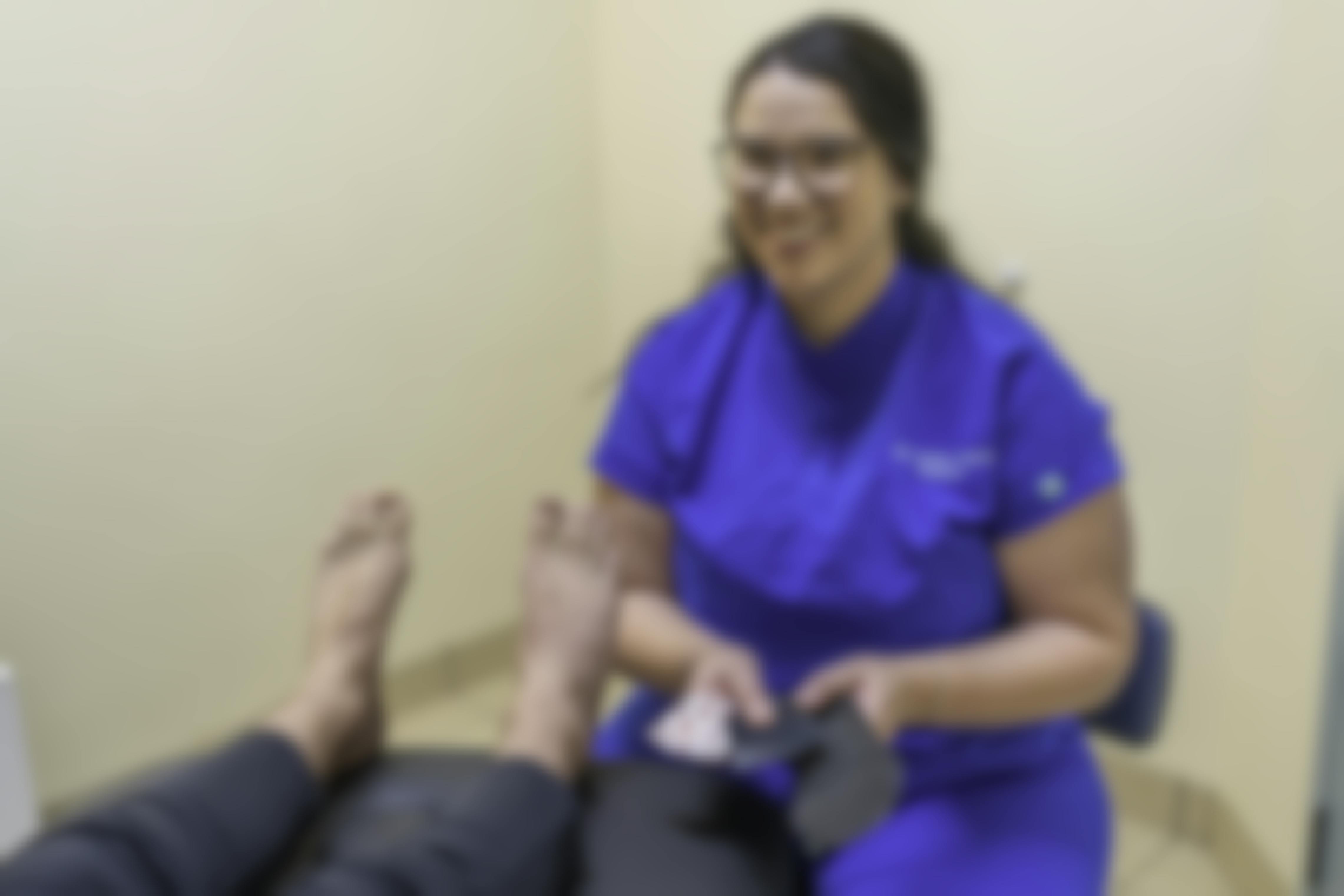Foot Orthotics Prescriptions

Since there is a wide variety of foot orthotics, the podiatrist will determine if foot orthotics is the best treatment plan for the condition and what specific type or plantar orthotics. The podiatrist also has the expertise to prescribe specifics corrections in the orthotics and modify it if needed.
Functional Corrective Foot Orthotics
Depending on the diagnosis, the podiatrist may prescribe a functional orthotic designed to change the way the joints of the foot and lower limb function during walking. These are often used when there is a condition that needs to be treated quickly. This helps reduce mechanical stress on the injured structure and thus help it heal.
Dynamic Foot Orthotics
Dynamic foot orthotics are used to maintain most natural movements of the foot and ankle while providing support and correction. These are used for minor pathologies or injury prevention
For both fonctionnal corrective and dynamic foot orthotics an adaptation period is usually expected for 2-4 weeks, and ajustements to orthotics and/or shoes are sometimes part of the treatment. Orthotics lifespan can be between one year to over five years, depending on the prescription, level of correction, patient health condition, weight and changes in usage
They can be as versatile and as thin as possible to fit most shoes, if the patient's condition allows it. The patient can therefore transfer their custom orthotic from one shoe to another without having to buy new shoes in most of cases.
Accommodative Foot Orthotics
The accommodative foot orthotic are commonly used for diabetics, older patients or with specific medical conditions requiring very soft, gentle and padded correction. Used to relieve the pressure – in terms of magnitude and dur ation – from a painful or injured area on the bottom of the foot. These insoles facilitate walking because they are less rigid and more comfortable.
A musculoskeletal evaluation

complete podiatric evaluation
Before prescribing a foot orthotics, the podiatrist will perform a complete medical examination which will include the history of the main and secondary complaint, anatomical palpation and a complete biomecanical examination. If necessary, additional tests will be done, including x-ray, ultrasound, magnetic resonance and referral to a specialist.
At the very end, the podiatrist compiles the information, makes a diagnosis and determines whether a foot orthosis is indicated. Only a doctor or podiatrist can diagnose and prescribe a foot orthosis.
podiatric biomechanical examination
The biomecanical examination consists of evaluating the patient's posture, body alignment, range of joint movement and gait. This complete examination may include multiple tests in order to make a diagnosis and establish the best treatment plan. This examination is also necessary to determine the prescription of custom-made foot orthotics.
the importance of foot mold
Custom foot molding is important. It is designed in several ways depending on the desired treatment and controlled positioning of the foot. This step is essential to obtain a high-performance and comfortable foot orthosis.
Images
FAQs
Who Can Prescribe Foot Orthotics?
Only physicians and podiatrists are authorized to prescribe orthotics. These professionals have the necessary training to carry out a diagnosis and treatment, according to the Podiatry Act. You are therefore strongly advised not to consult a professional who is not certified.
What Are the Advantages of Consulting a Podiatrist?
A podiatrist has extensive knowledge of human anatomy, allowing him to understand how certain limitations may impact a person’s gait. His patients benefit from a detailed diagnosis that results in the appropriate treatment. In addition, patients are protected by the College of Podiatrists, because his treatment is governed by the Code of Ethics of Podiatrists.
Who Can Benefit from Orthotics?
All age groups can have foot orthotics to correct biomechanics and posture, if a podiatrist determines that they are necessary. Beginning at age three and up to age seven, children can wear orthotics to permanently correct the shape of the foot.
